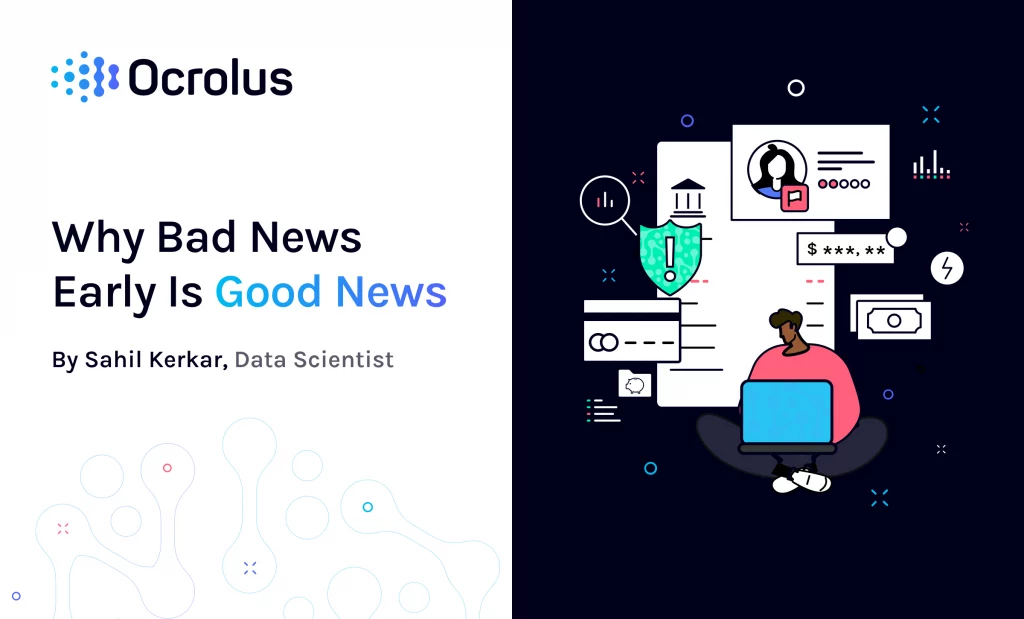This website uses cookies so that we can provide you with the best user experience possible. Cookie information is stored in your browser and performs functions such as recognising you when you return to our website and helping our team to understand which sections of the website you find most interesting and useful.
Why Bad News Early Is Good News

There’s an age-old adage in sales: it’s best to find out early in the sales process that your prospect will never commit instead of wasting hours in the hope that you can eventually change their minds. This is also true when it comes to vetting loan applications. By empowering loan officers to identify unqualified borrowers early on, lenders can process more successful loans in less time and prevent financial losses. Here’s how document automation helps lenders quickly and accurately screen out borrowers who aren’t a match.
Accessing a robust picture of financial health
Mortgage lenders can’t make accurate lending decisions without fully understanding an applicant’s financial health. Credit checks are useful, but they only go so far when assessing a borrower’s creditworthiness. To properly make that call, lenders need access to a much larger set of financial data and analytics.
A document automation software like Ocrolus can help lenders evaluate a borrower’s financial health using bank data and cash flow analytics, including income and alternative revenue sources, expenses, transaction categories, ratios, and spending trends. This granular information gives lenders a clear understanding of cash flow seasonality, helps them measure non-traditional income, and allows them to assess debt capacity.
With a robust picture of financial health, lenders can create precise credit models that predict the risk of default, increasing yields and expanding access to credit. Once they have timely access to the right insights, lenders can better manage risk earlier in the process, identify unqualified borrowers earlier on, and make smarter, more informed business decisions.
According to a recent study from Infosys on mortgage trends in the post-pandemic world, some lenders are using advanced versions of artificial intelligence (AI) and machine learning (ML) to find borrowers’ hidden financial relationships and even predict the behavior of the loan applicant. Such AI and ML tools can lower origination costs, reduce credit losses, and increase risk-adjusted margins. Lenders can even use them to lower legal costs associated with fraud and upsell products where appropriate.
Avoiding costly human error
Even the most detail-oriented lending professionals make mistakes from time to time. When something slips through the cracks early on in the review process, it can be especially costly to a mortgage lender. This is especially likely to happen when the lender is short-staffed or processing a large volume of loan applications. Even when that’s not the case, it takes humans a long time to manually review loan applications. As lending professionals pore over piles of documents, they can unintentionally end up making costly mistakes.
According to NPR, a clerical error caused Citibank to “accidentally” disburse $900 million last summer—a massive blunder that underscored the need for AI and automated solutions that reduce risk. As a judge in their later case found, the bank’s “six eyes” system in which three separate people approve a transaction had “broke down after a contractor checked the wrong box on a digital payment form,” showing just how easy it is for one small error to spiral out of control.
A document automation solution like Ocrolus solves problems associated with human error, significantly reducing operational risk. Its unique human-in-the-loop (HITL) process allows human verifiers to both ensure the accuracy of real-time data and retrain internal ML models for continuous improvements in the speed and accuracy of returned data.
Lenders can also use AI to analyze key financial documents used for underwriting, providing lending professionals with the precise insight they need to make better decisions in real-time. This kind of intelligent automation paired with human review reduces errors, allowing lenders to manage risk and prevent financial losses.
Identify unqualified borrowers and reduce risk
Although it’s common to say, “I’ll take the good news,” when someone asks you if you want the good news or the bad news first, the reverse is actually true for mortgage lenders. It’s better to have a clear picture of a borrower’s financial health before proceeding with a loan application than to discover that they’re at risk of default later on because you didn’t have a comprehensive view of their financial picture.
Ocrolus can deliver the insights you need when you need them. It provides lending professionals with cash flow analytics that offer a more nuanced view of a borrower’s creditworthiness than just the traditional methods. HITL document processing can also give you unparalleled efficiency, avoiding costly human errors and reducing risk. THis means you’ll spend less time on unqualified borrowers and more time developing relationships with the borrowers you need.





